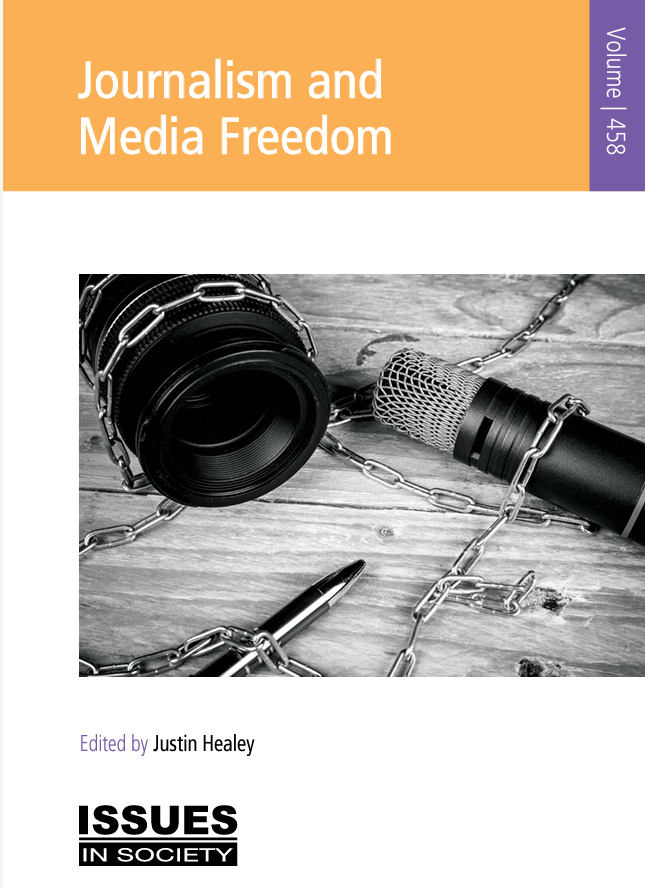

Australians are increasingly connecting online through computers, mobile phones and other electronic devices to access the internet and social media. In the process, young people in particular are becoming more at risk of being exposed to fraud, identity theft, unauthorised access to personal information, stalking, harassment and exposure to illicit or offensive materials. This book presents a range of cybersafety tips to arm readers with an informed awareness of the risks online and offer advice on how to stay protected. A chapter in the book is specifically dedicated to understanding and dealing with the disturbing proliferation in cyberbullying. What are the practical ways in which we can safely communicate, access secure information and maintain healthy relationships online?

Advertising in its various forms has a powerful impact on Australian society. It not only influences the public's consumer preferences; it also helps shape society's values. Advertising is self-regulated in Australia, however the industry is subject to a range of media codes and standards. What are these standards, and who do consumers complain to if they encounter inappropriate or unethical marketing practices on television, radio or in the growing digital media space? This book explores a range of ethical issues in advertising, such as false and misleading claims. The book also focuses on children's exposure to sports sponsorship, sexualised images, and the marketing of junk food, alcohol and gambling. What happens when advertisers' claims and products don't always align with prevailing community values and attitudes?

Social media has revolutionised how most of us communicate; no one more so than teenagers and young adults, who spend on average 2-3 hours a day connected to social media sites. Online social networking provides young people with a range ofpositive opportunities to maintain social connections and share emotional support, learning and an almost infinite array of interests. However, social media use can also have negative impacts, such as excessive use, social isolation, loss of privacy, cyberbullying, anxiety and self-esteem pressures. This book examines the prevalence of social media use by young Australians, and explores its impacts on their wellbeing. The book also offers helpful tips on appropriate ways of using and staying safe on social media sites. How do young, developing digital natives get the balance right when so much of their lives is being lived online?

Nearly half of Australian children aged 9-16 years experience regular exposure to sexual images via the media, online and hand-held devices. Pornography does not exist in a digital vacuum, but rather within a broader social context which reinforces sexual attitudes, beliefs and stereotypes about gender, sexism, sexual objectification, unsafe sexual health practices and violence-supportive attitudes. What are the impacts of porn? How do young people navigate the risks and realities of intended and accidental exposure to explicit content? This resource sensitively handles topics including 'sexting', image-based abuse, age verification, parental controls and communication with teens about pornography. The book explores interventions and initiatives aimed at educators, parents and young people to address the harms of pornography through promotion of online safety practices, critical thinking and discussion. How do we deal with the harms of early access to pornography and promote appropriate digital and sexual literacies for young people and their developing sexuality? "Sex sells" - but if it's so freely available and left to its own devices - at what price?

Many of us, particularly young consumers, are constantly connected online and increasingly informed by digital media. For the first time, Australians' use of online news has surpassed traditional offline news sources. In this confusing age of misinformation, how do we make sense of media messages? Media literacy and education are essential tools; we need to be able to tell fact from fiction in news that is rapidly and pervasively generated by multiple sources via websites and digital platforms, including social media. This book is a timely guide aimed at teachers and students, featuring expert advice on how to promote the necessary skills to access, understand, question, critically analyse and evaluate digital media. If we are to be well-informed and entertained by online content, it is important that we understand the news media environment and our engagement with it, in all of its factual, social and ethical dimensions. How is 'fake news' spread, and how can you detect it? What sources should you trust, and why?

Recent controversial police raids of media premises and journalists, on the grounds of national security, have prompted a united campaign by news media rivals to promote and protect the public's right to know what governments are doing. According to media outlets represented before a senate press freedom inquiry that is currently underway, Australians are being robbed of their right to know about vital issues that directly affect them by a culture of secrecy in the Australian government, and the use of draconian laws which threaten and intimidate whistleblowers and prosecute journalists as criminals. There is growing pressure to undertake legal reforms to protect the public's right to information and to ensure freedom of the press in Australia. Is our healthy, functioning democracy under threat, or is the government simply protecting the security of the nation?